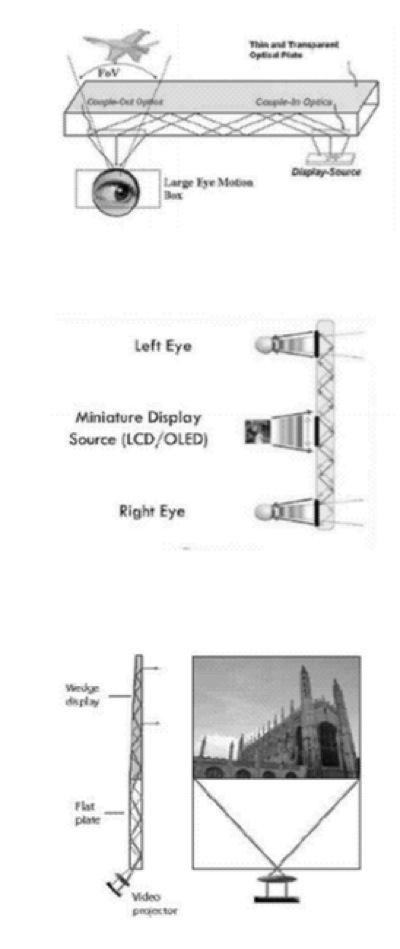An Apple patent (number 20120274653) at the U.S. Patent & Trademark Office shows that Apple may be eyeing head-mounted displays for gaming and entertainment applications. The patent is for “peripheral treatment of head-mounted displays.”
The patent is for methods and apparatus, including computer program products, implementing and using techniques for projecting a source image in a head-mounted display apparatus for a user. A first display projects an image viewable by a first eye of the user. A first peripheral light element is positioned to emit light of one or more colors in close proximity to the periphery of the first display.
A receives data representing a source image, processes the data representing the source image to generate a first image for the first display and to generate a first set of peripheral conditioning signals for the first peripheral light element, directs the first image to the first display, and directs the first set of peripheral conditioning signals to the first peripheral light element. As a result, an enhanced viewing experience is created for the user.
Here’s Apple’s background on the invention: “his invention relates to displaying images in a head-mounted display. A head-mounted display (HMD) is a display device that a person wears on the head in order to have video information directly displayed in front of the eyes. HMDs are also known as near-to-eye displays. A HMD has either one or two small CRT, LCD or OLED displays with magnifying lenses and other associated optical elements.
“The display(s) and optics are typically embedded in a helmet, glasses, or a visor, which a user can wear. Lenses and other optical components are used to give the user the perception that the images are coming from a greater distance, to prevent eyestrain. In HMDs that use a single display, the image is typically projected through optics that split the image into two identical images, and redirects each image to the respective eye. With two displays, the HMD can show stereoscopic images.
“The stereoscopic images attempt to create depth to the images by simulating the angular difference between the images viewed by each eye when looking at an object, due to the different positions of the eyes. This angular difference is one of the key parameters the human brain uses in processing images to create depth perception or distance in human vision.
” Some HMDs can be used to view a see-through image imposed upon a real world view, thereby creating what is typically referred to as an augmented reality. This is accomplished by reflecting the video images through partially reflective mirrors, such that the real world is seen through the mirrors’ reflective surfaces. The augmented reality can be combined with the stereoscopic images in various types of applications. Some examples include applications in surgery, where radiographic data, such as CAT scans or MRI imaging can be combined with the surgeon’s vision.
“Military, police and firefighters use HMDs to display relevant tactical information, such as maps or thermal imaging data. Engineers and scientists use HMDs to provide stereoscopic views of CAD schematics, simulations or remote sensing applications. Consumer devices are also available for use in gaming and entertainment applications.
“A problem with HMDs, primarily HMDs that are not of the see-through kind, is that the image on the display in front of each eye fills the central but not the peripheral field of view of the user. Consequently, the visual experience is similar to looking into a box or tunnel having a small screen at a distance. Peripheral vision is good at detecting motion and as a result, occluded peripheral vision in HMDs can cause a user to experience motion sickness symptoms after some time. Thus, whereas existing HMDs may work well for their intended purposes for short periods of time, there is a continuing need for improved HMDs that provide enhanced long-time visual experience for the user.”
The inventors are John G. Tang and Anthony M. Fadell.

